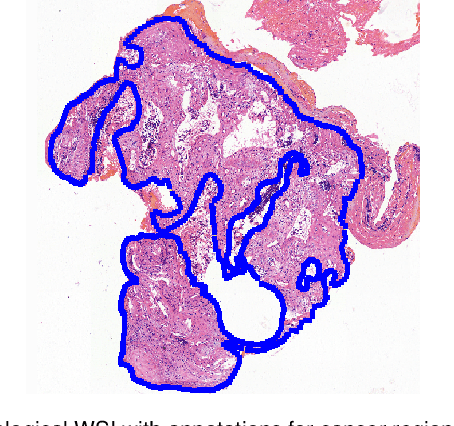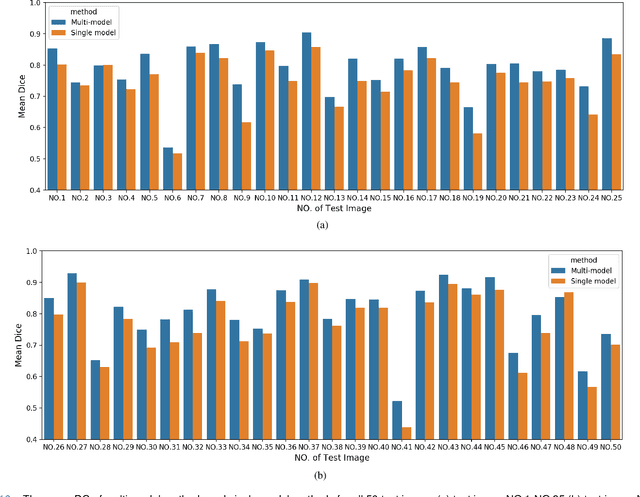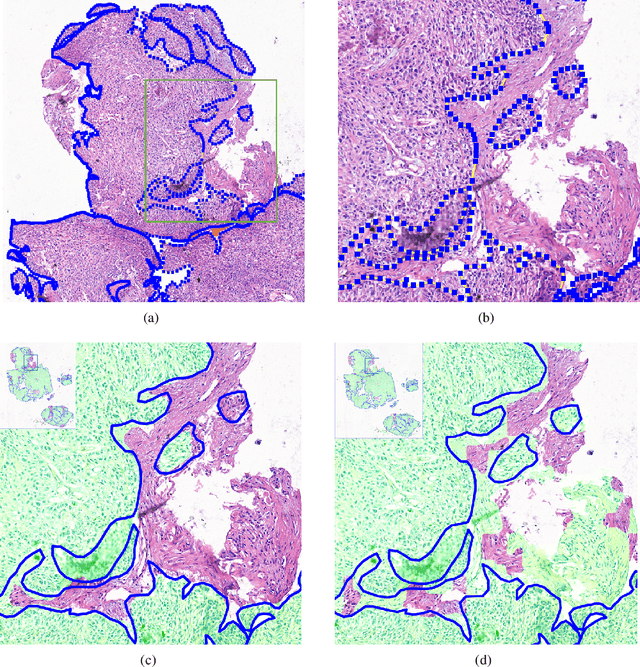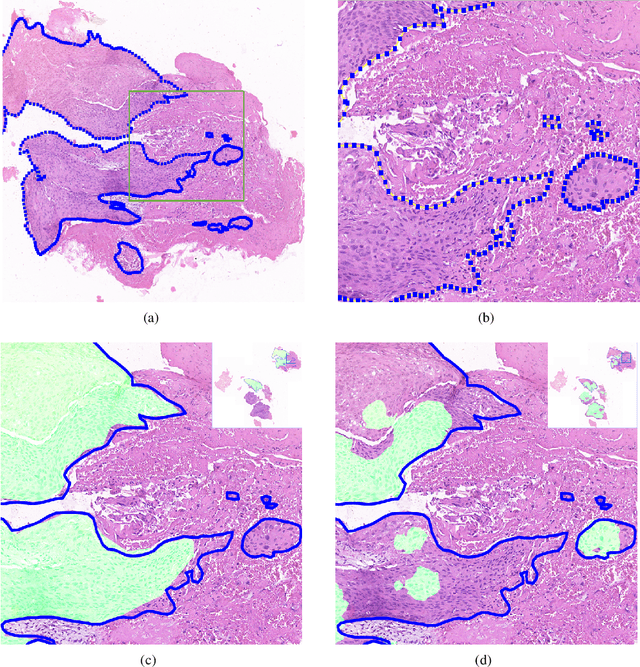Qifeng Yu
Learning Affine Correspondences by Integrating Geometric Constraints
Apr 10, 2025Abstract:Affine correspondences have received significant attention due to their benefits in tasks like image matching and pose estimation. Existing methods for extracting affine correspondences still have many limitations in terms of performance; thus, exploring a new paradigm is crucial. In this paper, we present a new pipeline designed for extracting accurate affine correspondences by integrating dense matching and geometric constraints. Specifically, a novel extraction framework is introduced, with the aid of dense matching and a novel keypoint scale and orientation estimator. For this purpose, we propose loss functions based on geometric constraints, which can effectively improve accuracy by supervising neural networks to learn feature geometry. The experimental show that the accuracy and robustness of our method outperform the existing ones in image matching tasks. To further demonstrate the effectiveness of the proposed method, we applied it to relative pose estimation. Affine correspondences extracted by our method lead to more accurate poses than the baselines on a range of real-world datasets. The code is available at https://github.com/stilcrad/DenseAffine.
Stereo Event-based, 6-DOF Pose Tracking for Uncooperative Spacecraft
Mar 17, 2025Abstract:Pose tracking of uncooperative spacecraft is an essential technology for space exploration and on-orbit servicing, which remains an open problem. Event cameras possess numerous advantages, such as high dynamic range, high temporal resolution, and low power consumption. These attributes hold the promise of overcoming challenges encountered by conventional cameras, including motion blur and extreme illumination, among others. To address the standard on-orbit observation missions, we propose a line-based pose tracking method for uncooperative spacecraft utilizing a stereo event camera. To begin with, we estimate the wireframe model of uncooperative spacecraft, leveraging the spatio-temporal consistency of stereo event streams for line-based reconstruction. Then, we develop an effective strategy to establish correspondences between events and projected lines of uncooperative spacecraft. Using these correspondences, we formulate the pose tracking as a continuous optimization process over 6-DOF motion parameters, achieved by minimizing event-line distances. Moreover, we construct a stereo event-based uncooperative spacecraft motion dataset, encompassing both simulated and real events. The proposed method is quantitatively evaluated through experiments conducted on our self-collected dataset, demonstrating an improvement in terms of effectiveness and accuracy over competing methods. The code will be open-sourced at https://github.com/Zibin6/SE6PT.
3D Trajectory Reconstruction of Moving Points Based on a Monocular Camera
Feb 27, 2025Abstract:The motion measurement of point targets constitutes a fundamental problem in photogrammetry, with extensive applications across various engineering domains. Reconstructing a point's 3D motion just from the images captured by only a monocular camera is unfeasible without prior assumptions. Under limited observation conditions such as insufficient observations, long distance, and high observation error of platform, the least squares estimation faces the issue of ill-conditioning. This paper presents an algorithm for reconstructing 3D trajectories of moving points using a monocular camera. The motion of the points is represented through temporal polynomials. Ridge estimation is introduced to mitigate the issues of ill-conditioning caused by limited observation conditions. Then, an automatic algorithm for determining the order of the temporal polynomials is proposed. Furthermore, the definition of reconstructability for temporal polynomials is proposed to describe the reconstruction accuracy quantitatively. The simulated and real-world experimental results demonstrate the feasibility, accuracy, and efficiency of the proposed method.
Accurate Pose Estimation for Flight Platforms based on Divergent Multi-Aperture Imaging System
Feb 27, 2025Abstract:Vision-based pose estimation plays a crucial role in the autonomous navigation of flight platforms. However, the field of view and spatial resolution of the camera limit pose estimation accuracy. This paper designs a divergent multi-aperture imaging system (DMAIS), equivalent to a single imaging system to achieve simultaneous observation of a large field of view and high spatial resolution. The DMAIS overcomes traditional observation limitations, allowing accurate pose estimation for the flight platform. {Before conducting pose estimation, the DMAIS must be calibrated. To this end we propose a calibration method for DMAIS based on the 3D calibration field.} The calibration process determines the imaging parameters of the DMAIS, which allows us to model DMAIS as a generalized camera. Subsequently, a new algorithm for accurately determining the pose of flight platform is introduced. We transform the absolute pose estimation problem into a nonlinear minimization problem. New optimality conditions are established for solving this problem based on Lagrange multipliers. Finally, real calibration experiments show the effectiveness and accuracy of the proposed method. Results from real flight experiments validate the system's ability to achieve centimeter-level positioning accuracy and arc-minute-level orientation accuracy.
High-precision visual navigation device calibration method based on collimator
Feb 25, 2025Abstract:Visual navigation devices require precise calibration to achieve high-precision localization and navigation, which includes camera and attitude calibration. To address the limitations of time-consuming camera calibration and complex attitude adjustment processes, this study presents a collimator-based calibration method and system. Based on the optical characteristics of the collimator, a single-image camera calibration algorithm is introduced. In addition, integrated with the precision adjustment mechanism of the calibration frame, a rotation transfer model between coordinate systems enables efficient attitude calibration. Experimental results demonstrate that the proposed method achieves accuracy and stability comparable to traditional multi-image calibration techniques. Specifically, the re-projection errors are less than 0.1463 pixels, and average attitude angle errors are less than 0.0586 degrees with a standard deviation less than 0.0257 degrees, demonstrating high precision and robustness.
Line-based 6-DoF Object Pose Estimation and Tracking With an Event Camera
Aug 06, 2024Abstract:Pose estimation and tracking of objects is a fundamental application in 3D vision. Event cameras possess remarkable attributes such as high dynamic range, low latency, and resilience against motion blur, which enables them to address challenging high dynamic range scenes or high-speed motion. These features make event cameras an ideal complement over standard cameras for object pose estimation. In this work, we propose a line-based robust pose estimation and tracking method for planar or non-planar objects using an event camera. Firstly, we extract object lines directly from events, then provide an initial pose using a globally-optimal Branch-and-Bound approach, where 2D-3D line correspondences are not known in advance. Subsequently, we utilize event-line matching to establish correspondences between 2D events and 3D models. Furthermore, object poses are refined and continuously tracked by minimizing event-line distances. Events are assigned different weights based on these distances, employing robust estimation algorithms. To evaluate the precision of the proposed methods in object pose estimation and tracking, we have devised and established an event-based moving object dataset. Compared against state-of-the-art methods, the robustness and accuracy of our methods have been validated both on synthetic experiments and the proposed dataset. The source code is available at https://github.com/Zibin6/LOPET.
Small Aerial Target Detection for Airborne Infrared Detection Systems using LightGBM and Trajectory Constraints
Jul 01, 2024



Abstract:Factors, such as rapid relative motion, clutter background, etc., make robust small aerial target detection for airborne infrared detection systems a challenge. Existing methods are facing difficulties when dealing with such cases. We consider that a continuous and smooth trajectory is critical in boosting small infrared aerial target detection performance. A simple and effective small aerial target detection method for airborne infrared detection system using light gradient boosting model (LightGBM) and trajectory constraints is proposed in this article. First, we simply formulate target candidate detection as a binary classification problem. Target candidates in every individual frame are detected via interesting pixel detection and a trained LightGBM model. Then, the local smoothness and global continuous characteristic of the target trajectory are modeled as short-strict and long-loose constraints. The trajectory constraints are used efficiently for detecting the true small infrared aerial targets from numerous target candidates. Experiments on public datasets demonstrate that the proposed method performs better than other existing methods. Furthermore, a public dataset for small aerial target detection in airborne infrared detection systems is constructed. To the best of our knowledge, this dataset has the largest data scale and richest scene types within this field.
* 15 pages,10 figures
Bridging the Domain Gap in Satellite Pose Estimation: a Self-Training Approach based on Geometrical Constraints
Dec 23, 2022Abstract:Recently, unsupervised domain adaptation in satellite pose estimation has gained increasing attention, aiming at alleviating the annotation cost for training deep models. To this end, we propose a self-training framework based on the domain-agnostic geometrical constraints. Specifically, we train a neural network to predict the 2D keypoints of a satellite and then use PnP to estimate the pose. The poses of target samples are regarded as latent variables to formulate the task as a minimization problem. Furthermore, we leverage fine-grained segmentation to tackle the information loss issue caused by abstracting the satellite as sparse keypoints. Finally, we iteratively solve the minimization problem in two steps: pseudo-label generation and network training. Experimental results show that our method adapts well to the target domain. Moreover, our method won the 1st place on the sunlamp task of the second international Satellite Pose Estimation Competition.
Deep Learning Methods for Lung Cancer Segmentation in Whole-slide Histopathology Images -- the ACDC@LungHP Challenge 2019
Aug 21, 2020



Abstract:Accurate segmentation of lung cancer in pathology slides is a critical step in improving patient care. We proposed the ACDC@LungHP (Automatic Cancer Detection and Classification in Whole-slide Lung Histopathology) challenge for evaluating different computer-aided diagnosis (CADs) methods on the automatic diagnosis of lung cancer. The ACDC@LungHP 2019 focused on segmentation (pixel-wise detection) of cancer tissue in whole slide imaging (WSI), using an annotated dataset of 150 training images and 50 test images from 200 patients. This paper reviews this challenge and summarizes the top 10 submitted methods for lung cancer segmentation. All methods were evaluated using the false positive rate, false negative rate, and DICE coefficient (DC). The DC ranged from 0.7354$\pm$0.1149 to 0.8372$\pm$0.0858. The DC of the best method was close to the inter-observer agreement (0.8398$\pm$0.0890). All methods were based on deep learning and categorized into two groups: multi-model method and single model method. In general, multi-model methods were significantly better ($\textit{p}$<$0.01$) than single model methods, with mean DC of 0.7966 and 0.7544, respectively. Deep learning based methods could potentially help pathologists find suspicious regions for further analysis of lung cancer in WSI.
 Add to Chrome
Add to Chrome Add to Firefox
Add to Firefox Add to Edge
Add to Edge